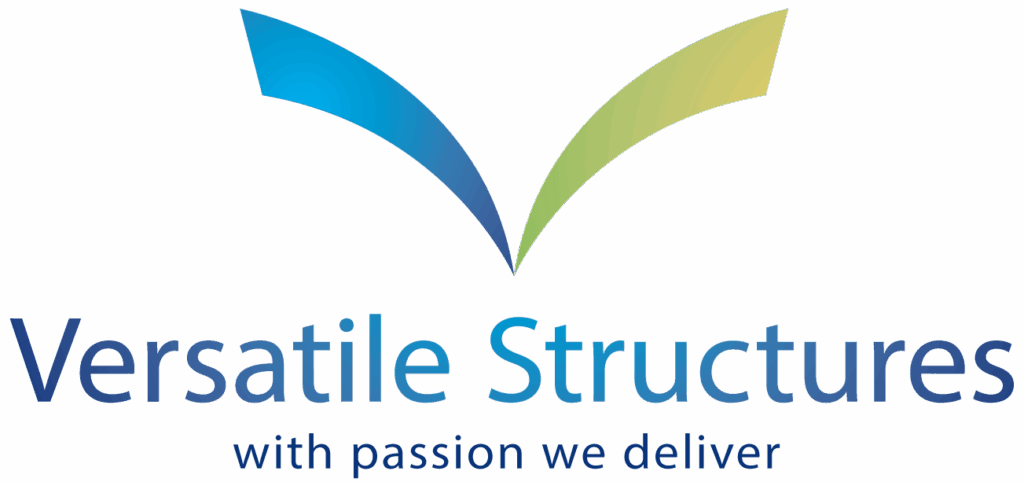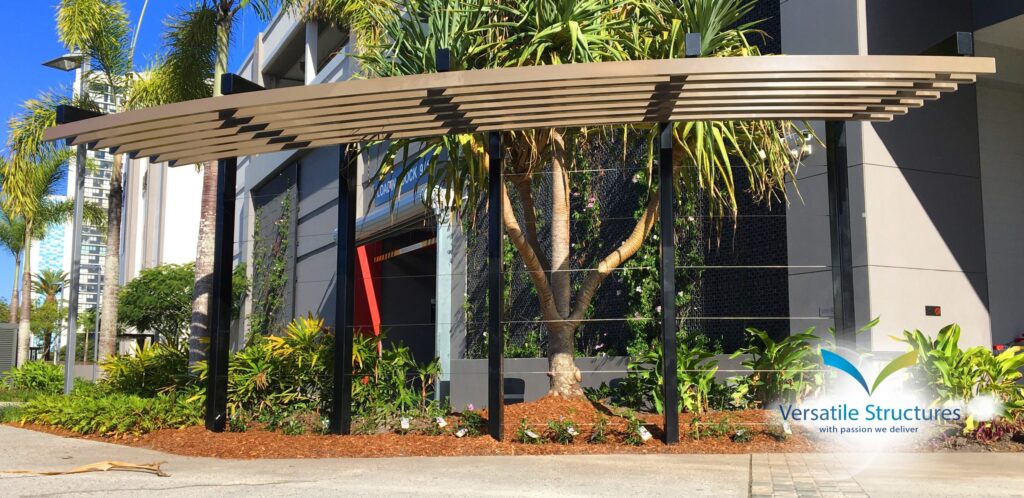Awnings date back to ancient Egypt where animal skins and woven mats were hung on poles to create shade and shelter from the burning sun. Sunshades and the technology used have altered significantly from being plain utilitarian constructions to the highly adaptable state that you see today.
What are Industrial Awnings Used for?
Commercial establishments such as restaurants, retail shops, swimming centres and commercial constructions greatly benefit from industrial awnings that offer their patrons sufficient cover against the harsh Australian sun, in particular the Gold Coast, enhance usability during unfavourable weather conditions as well as gaining more space and increased capacity, thus increasing their turnover.
Industrial awnings can also act as a billboard and draw customers’ attention by featuring the company’s logo. Striped awnings are attractive too since there are several distinct colour patterns to pick from and they make for a great storefront display that you can see in the suburban strip shopping malls.
Industrial Awning Substrates
Industrial fabric awnings are available in canvas, vinyl/PVC and acrylic. When selecting substrates, it is key to use the highest quality European design industrial awnings and blinds to ensure you receive the best possible quality and functionality available.
Canvas (a woven linen from cotton, hemp, or linen) traditionally has been the top choice for most awnings as the heavier fabric can handle more of a load thus making the shade structure sturdier in the event of wind, rain or snowstorms.
Vinyl is a rigid PVC laminated material that is flexible and adaptable thanks to the addition of specific chemicals woven into the fabric to make it water, mildew and flame resistant. Bear in mind though, this limits the fabric’s ability to allow air passing through which can make these awnings feel a little warmer, as they don’t offer the cooling advantages of canvas. Cost can also be a consideration as a vinyl industrial awning is roughly triple that of a canvas awning of the same size.
Acrylic
The material feels like wool and eliminates all sun damage; hence it being referred to as the luxury fabric for industrial awnings. Acrylic was invented by Dupont in 1941 and is solution dyed with the chemical compound having its colour added before the material is woven. For this reason, acrylic industrial awnings retain its colour It is water-repellent with a high degree of moisture wicking. Acrylic is the ideal solution for awnings that need to be extended year around.
Custom industrial awnings
With many options for sourcing industrial awnings on the Gold Coast, it is important to understand the key benefits of custom designed industrial awnings.
- More dependable and suited to your exact need: the supplier will consider all possible factors and weather conditions to ensure a quality, functional and durable result
- Visually pleasing: the result will accurately fit the area and the colours will harmonise well to enhance the overall ambience and appearance of the building
- Select design and colour: you get to choose the substrate and design – be it a folding arm, cantilever design with no posts, cassette zip track drop blinds, side-track, or motorised industrial awning with wind sensors.
- Cost saving: Gain more space without having to build a full extension
- Distinctive identity: featuring your business logo makes it eye catching and boosts street appeal
Conclusion
The simplicity, attractiveness and utility of industrial awnings have supported their sustained use over time. A quality industrial awning can effectively block the sun’s heat and lower temperatures to save on air conditioning bills, enhance your space and offer comfort.

